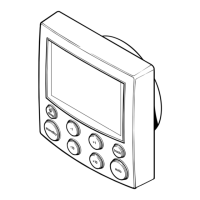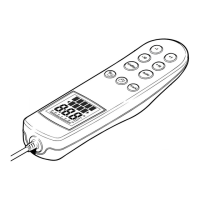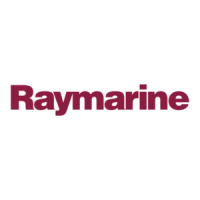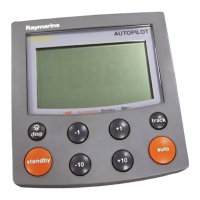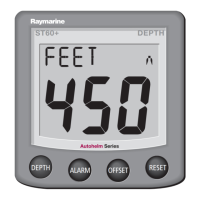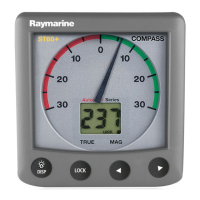Chapter 3: Installation 23
the cable will depend on the locations of the Auxiliary Alarm and instrument,
but however you run the cable, observe the following guidelines:
• If the cable has to be fed through the deck, always use a proprietary deck
gland.
• Where cables are fed through holes, always use grommets to prevent
chafing.
• Secure long cable runs so they do not present a hazard.
Connecting the instrument
Types of connection
The ST60 Multi instrument, is connected to SeaTalk as a repeater, and derives its
power directly from SeaTalk so that a separate power connection is not necessary.
Where a SeaTalk system includes an autopilot, the power for the system is
provided by the autopilot.
A range of Raymarine SeaTalk extension cables is available to connect separated
instruments. These cables are supplied with a SeaTalk connector fitted to each
end. A junction box can be used to join cables.
Connection options
Connection to SeaTalk is mandatory.
The NMEA connectors can remain without any connections or can be used in one
of two ways:
• You can connect for communication to and from NMEA (
see Chapter 1, Oper-
ation
for details of the functions supported).
• If the Auxiliary Alarm option is fitted, the
NMEA OUT terminals provide the
alarm signals to the buzzer.
Signal connections
Make the necessary connections to your ST60 instrument (see the
Connections to
ST60 Multi instrument
illustration).
81039_4.book Page 23 Wednesday, March 24, 2004 3:14 PM

